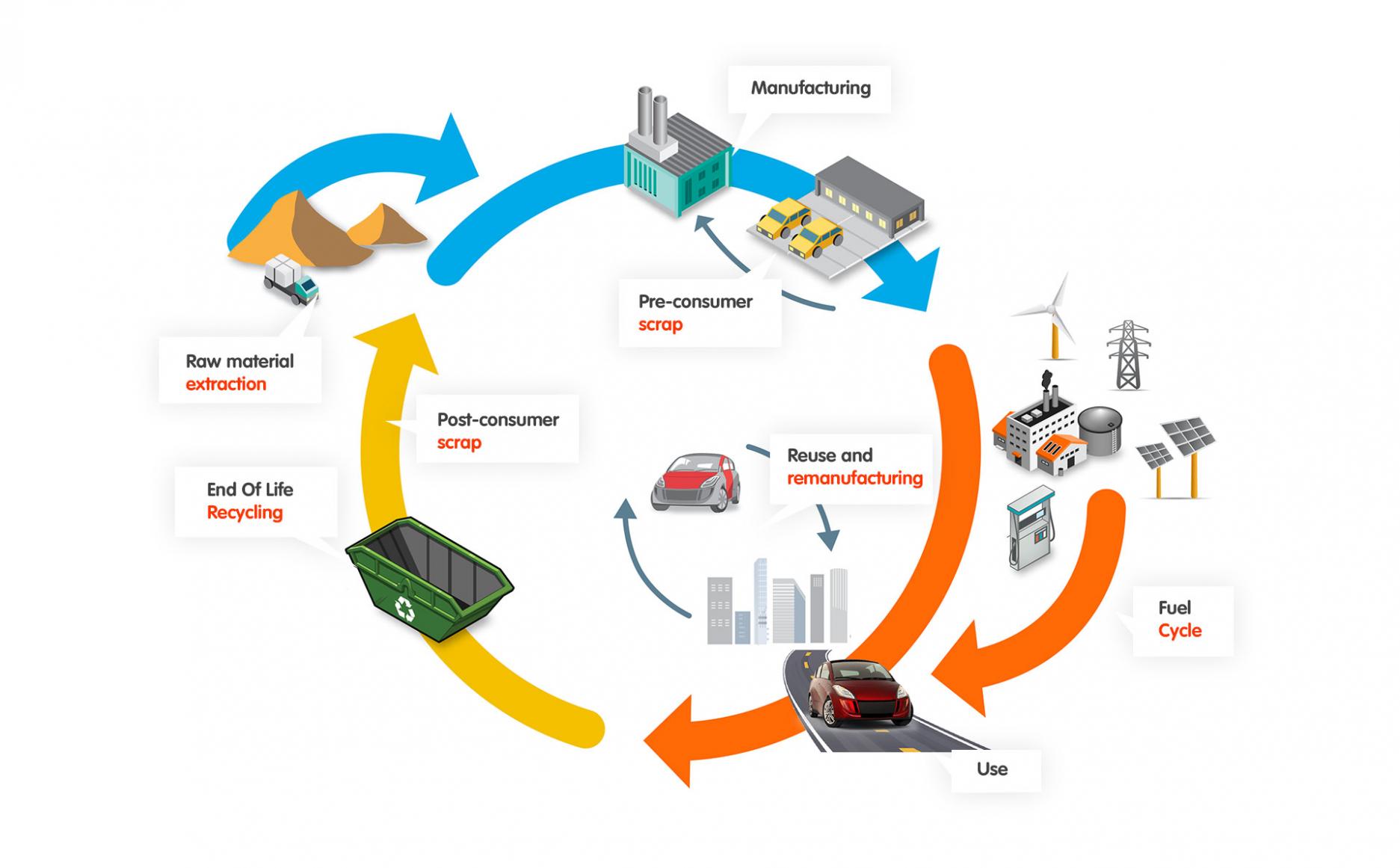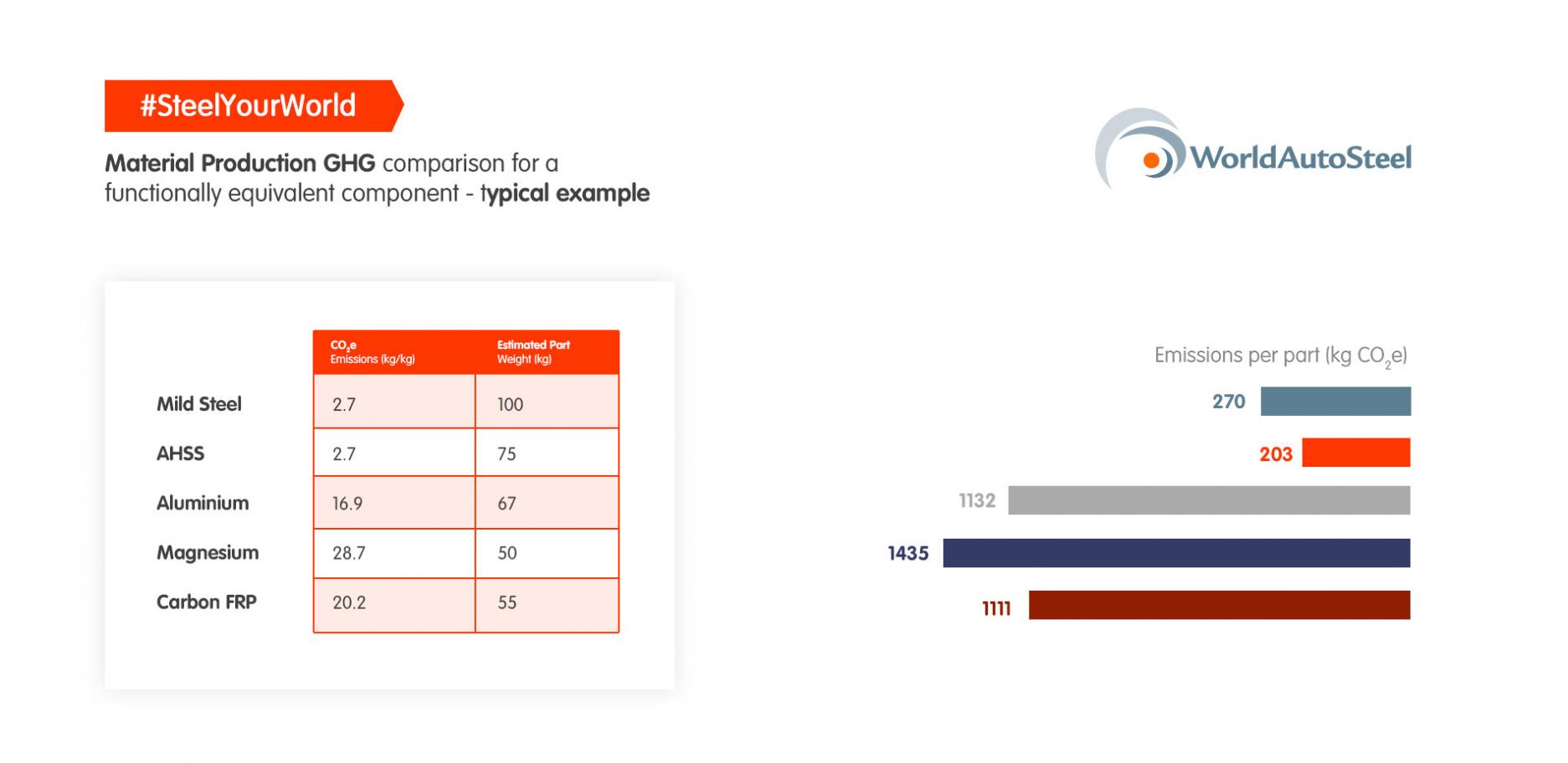 My space
My space

New automotive CO2 emissions regulation provides a unique opportunity to align regulatory practice with the state of the art in environmental product policy, launching a new era of successful environmental legislation free of major unintended consequences.
Maintaining a tailpipe-based car emission legislation is fundamentally flawed and will result in unintended consequences. The Steel industry calls on policymakers to future-proof new CO2 emissions rules by laying the foundation for life cycle thinking in the automotive sector.
In November 2017, the European Commission released a draft regulation on reducing CO2 emissions from new passenger cars and vans. The relevance of this file for reaching the EU’s targets under the 2030 climate and energy framework cannot be overstated: road transport generates the largest share of greenhouse gas emissions (GHG) in transport (72.9% in 2016) and is responsible for around 20% of the EU’s total GHG emissions. It is also the only sector where emissions continue to increase. Real-world emission reductions across all sectors are necessary for the EU to fulfil its CO2 reduction commitments under the Paris Agreement. Many policymakers around the world are facing these same challenges. The current tailpipe-only metric is incapable of telling us whether we are meeting our goals or not.
Yet, while the existing legislation does drive down emissions from the use phase (or tailpipe) by making cars more fuel efficient, it also shifts the environmental burden from the use phase to the production and recycling phases of the vehicle. As alternative powertrains and advanced materials gain prominence, the emissions related to manufacturing and vehicle disposal are becoming an increasingly significant part of the vehicle total life cycle emissions. As a result, the current tailpipe-based regulation captures only a shrinking share of the total vehicle emissions, with the unintended consequence that real-world emissions might even increase.

Estimate of how the balance of CO2 emissions associated with individual lifecycle stages might vary for different technologies in the future
© WorldAutoSteelThis effect will become even more pronounced with the upcoming regulation taking effect. Assuming a future target that is 30% lower than the 2021 one, we find that emissions from the production and recycling phases of a conventional petrol-powered compact class car could be as high as its use phase emissions. As a result, should the tailpipe approach be continued, more and more of the total CO2 emissions associated with these future vehicles could fall outside the regulation.
Adopting a Life Cycle Assessment (LCA) approach can ensure technological neutrality, as it allows for CO2 savings to occur across life cycle phases and the supply chain, while ensuring that the overall CO2 emissions are ultimately lower. Under a life cycle approach, carmakers would thus have a wider range of options, benefitting their competitiveness.

Vehicle cycle life
© WorldAutoSteelA Life Cycle Assessment (LCA) is the most comprehensive methodology to account for all phases of the life cycle. It considers a vehicle’s entire life cycle, from the manufacturing phase (including material production and vehicle assembly) through the use phase (including production and combustion of fuel) to the end of life phase (including end of life disposal and recycling). It helps ensure that design and engineering choices made to reduce vehicle emissions in one phase of vehicle life results in a total life cycle emissions reduction.
There are already existing LCA standards and databases as well as policy examples demonstrating that integrating LCA in decision making is possible. In addition, the Technical University Berlin has developed a series of voluntary policy options outlining how this could be done for vehicle emissions without requiring major changes to the proposed legislation.
What is now needed is for policy makers to take the lead and bring forward proposals taking life cycle emissions into account in the regulation, to avoid unintended consequences and make it future-proof. There are many ways to use life cycle thinking and LCA in environmental policy. The best way to integrate them into the policy making process or the policies themselves will depend on the specifics of each regulatory issue. As a minimum, life cycle thinking and LCA should always be used during the policy process, so that unintended consequences can be identified, and their potential size can be gauged. Once it has been established that the risk of unintended consequences is substantial, and their potential size is significant, as is the case with automotive GHG emissions, life cycle thinking or LCA should be used to mitigate the trade-offs that generate the unintended consequences.
Trade-offs cannot be avoided by regulating production and use phase emissions separately. This can only be achieved by life-cycle-based policies that generate incentives to reduce emissions across all stages of a vehicle’s life.
Environmental agencies around the world support LCA. The European Commission calls it the “the best framework for assessing the potential environmental impacts of products currently available.” Life-cycle-based environmental regulation is in its infancy and not without challenges. However, LCA is a mature environmental assessment tool with global standards and close to 50 years of development and practice. It provides a rigorous methodology to account for all emissions generated during the life of a product, making it the ideal tool to identify, quantify and prevent environmental trade-offs.
Across the globe, environmental regulators and policy makers have begun to draft legislation with a life cycle perspective, such as California’s Low Carbon Fuel Standard. See the list in the figure of standards that already include life cycle thinking (see figure in the right column). Current discussions in the EU are also supportive of a life cycle approach in automotive regulation currently under development. New automotive CO2emissions regulation provides a unique opportunity to align regulatory practice with the state of the art in environmental product policy, launching a new era of successful environmental legislation free of major unintended consequences.
Original publication: WorldAutoSteel's website
Primary steel manufacture emits 7 to 20 times less emisisons than any other automotive structure material.
